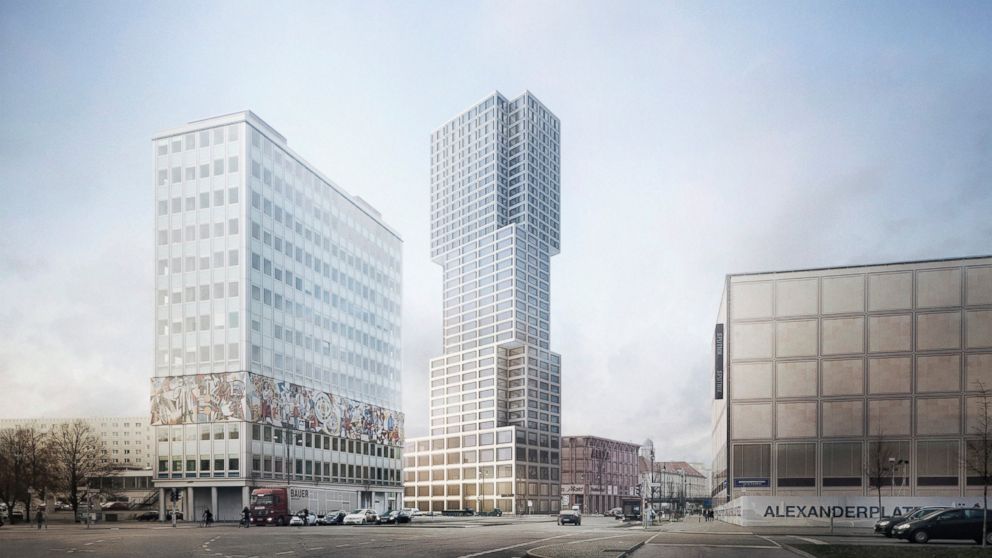In Berlin, Alexanderplatz is Hot Again --- This Time for Architects

— -- For nearly half a century the tallest building in Berlin has been a relic of its Soviet past. The Park Inn, a slender glass and concrete hotel in Alexanderplatz, was erected in the late 1960's to mark East Germany’s 20th anniversary.
The 410-foot tall edifice, called Hotel Stadt Berlin at the time of its construction, can still be seen across much of the low-slung German capital today, standing in the shadow of the city’s television tower, the iconic sphere that stands just over 1,200 feet.
Yet as Berlin’s property values continue to soar - rising faster than any German city over the past five years - residential developers are set to challenge the Park Inn’s elevation supremacy. Two international builders have unveiled plans to erect skyscrapers at Alexanderplatz that will stand nearly 500-feet high and house some of the most expensive property in the city.
Russian developer MonArch AG, one of Moscow's largest builders, plans to construct a sleek glass and steel tower that will measure at least 490 feet high and include 14,000 sq metres of residential apartments, the developer says.
A more ambitious project is being developed by the American firm Hines. The Houston based company is planning to build a boxy, twisting structure designed by Frank Gehry that will rise 490-feet and include three-hundred apartments and a hotel. Despite intense scrutiny from city officials, Berlin’s planning commission is set to approve the projects later this year, both developers say.
Though the new designs have triggered intense public reaction for their girth and ambition, they are being joined by more than 20 new residential properties in the planning or construction stages around Alexanderplatz, according to the Bauamt der Stadt Berlin, the city's building authority.
The surge of new development around a decades-old Soviet-style transportation hub underscores not only developers increasing confidence in the Berlin property market, but also the race to find buildable space in Mitte, a district with some of the most expensive property values in the city.
“Alexanderplatz has a very rich history and tradition for Berlin,” says Christoph Reschke, co-managing director of Hines Germany. He says the new project will include small apartments and penthouses but that prices haven’t yet been set. “We see growth for this area just as we see growth for the entire Berlin market.”
Alexanderplatz is an unlikely target for upmarket housing. A broad and bleak concrete square in the heart of old East Berlin, it has long stood as one of Germany's less-exalted instances of urban planning. Lined with aging, prefab high rises, it is the epitome of the former communist regime's preference for function over form, says Laura Fogarasi-Ludloff, a principal architect at Ludloff + Ludloff Architekten, a firm that has designed a string of residential properties in Berlin. She says many long-time east Berliners, stubbornly wary of gentrification symbols, view the new designs as another attempt to erase any trace of the former East Berlin, turning the iconic square into just another oversize strip mall bearing little resemblance to its historical form.
“It’s not that the projects themselves are terrible in any way,” Fogarasi-Ludloff says. “It’s just that the designs don’t fit to it’s location and seem completely out of place for Alexanderplatz.”




